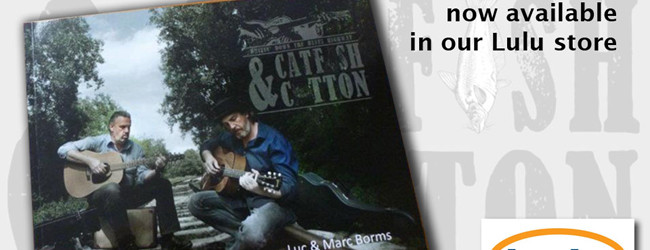Last year, two brothers from Belgium traveled thousands of miles to discover and document a first-hand pilgrimage to the Mississippi delta. From their travels, stays, music jams, and dozens of interviews, they’ve compiled a book that attempts to capture the fascinating characters and sights of this musical mecca.
Now, you can read the entire introduction to this brand new blues book, from American Blues Scene’s very own Editor, Matt Marshall.
 For many years, blues music fans have made the pilgrimage to the Mississippi Delta, an ancient land that idly sits adjacent to the mighty Mississippi River. Highway 61, the “blue highway” cuts through the heart of the delta. It was this stretch of road that countless bluesmen walked or hitchhiked, where African-Americans escaped desperate living conditions in search of a better life in Chicago, Saint Louis, or Detroit. Highway 61 was the road where Robert Johnson supposedly sold his soul, and where Bessie Smith died. The blue highway leads straight to the heart of the blues.
For many years, blues music fans have made the pilgrimage to the Mississippi Delta, an ancient land that idly sits adjacent to the mighty Mississippi River. Highway 61, the “blue highway” cuts through the heart of the delta. It was this stretch of road that countless bluesmen walked or hitchhiked, where African-Americans escaped desperate living conditions in search of a better life in Chicago, Saint Louis, or Detroit. Highway 61 was the road where Robert Johnson supposedly sold his soul, and where Bessie Smith died. The blue highway leads straight to the heart of the blues.
A trip to the Mississippi Delta can be an exhilarating experience, filled with unexpected discoveries, colorful, interesting people, southern hospitality, and, of course, some of the most powerful music that can be heard anywhere — an art form that gave birth to nearly every facet of popular music today; the blues.
By all normal indicators, the delta would appear to be the last place to plan a trip — let alone a pilgrimage, as many blues music fans have done for decades. The area is one of the most impoverished in the country, it’s land maddeningly flat after centuries of the Mississippi river overflowing it’s banks. Many buildings are held together with years of haphazard fixes, or neglected entirely, and the scars of Jim Crow racism are still visible under the facade of an area that was once vibrant and flush from it’s cotton riches, but for over fifty years, has struggled to find it’s relevance after mechanization and modern technology has stolen most of it’s jobs. So why, in this place, is there is an unshakable attraction for lovers of music the world over?
Why do people come from thousands of miles away, across oceans and highways to visit the delta, and enjoy the rich musical heritage that it’s residents have come to discover is now one of it’s primary exports?
When I was first introduced to two brothers from Belgium, they had a curious and determined goal — to travel across the Atlantic ocean, and half of a country, to visit and document the Mississippi Delta, with the intent of creating a guiding book that seeks to explain it’s culture, of which there are few.
There is no denying that Europeans have and continue to hold blues music in high regard, and many travelers have made the journey to United States’ soil to visit what must seem like a foreign country within a foreign country. For those that cannot make the long and burdensome trip, little literature is available on the “land where the blues began,” and even less information is current. Thus, Marc and Luc Borms, two brothers from another continent, spent many months meticulously planning their own pilgrimage to the Delta. They sat in dusty bars, homes, studios, and back porches, speaking with many colorful residents, documenting the Delta’s sometimes genteel and other times bohemian inhabitants — juke joint owners, musicians, practitioners of southern cuisine, curators of museums dedicated to blues music, and more.
Catfish and Cotton works to give a glimpse into this distinguishing culture. Together, the brothers, who are blues musicians themselves, turn to the experiences and lives of the Delta’s natives and transplants in search of answers. What makes the delta a place of such musical distinction, despite raw appearances? And what drives so many people to love and respect the land that gave a voice to a musical genre that most accurately reflects the human condition — the blues?


